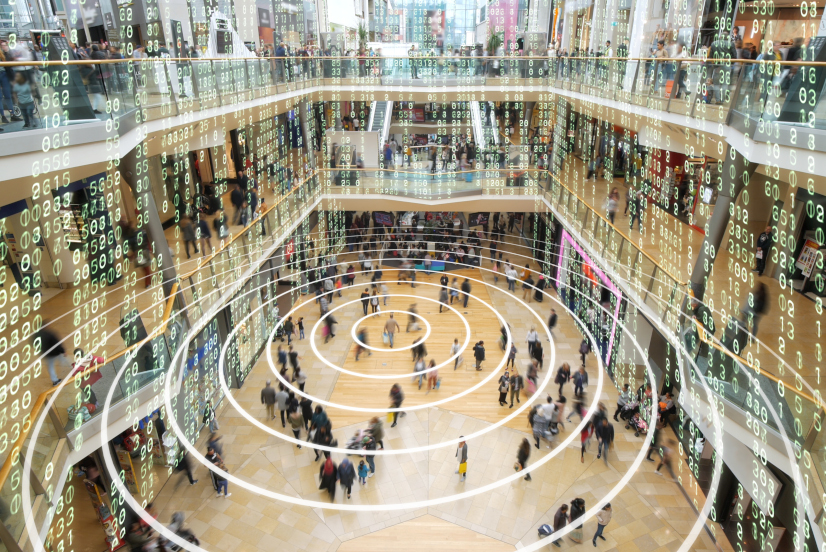The global retail industry is going through a period of rapid digital transformation. Spurred on by changing consumer habits and competition from e-commerce, retailers know that they must innovate to survive. It is, therefore, no surprise that industry executives plan to increase technology investments by 50% in the next 12 months. Retail management software will undoubtedly play a big role in this digitisation.
But what exactly is retail management software and what can it do?

Introducing retail management software
Retail management software refers to technology that digitises the back-end operations and processes that retail businesses carry out every day. It focuses specifically on solving planning and management challenges in the industry – as supposed to marketing software or payment technology.
Retail management software is certainly not new – there are many well-known platforms that the industry has been using for decades. That being said, modern retail maintenance and management software tends to be cloud-based and mobile-ready. As a result, it’s much easier to learn and use than more traditional systems.
There are many different suppliers of retail management software on the market today. Some are very niche, providing a specific service to one particular vertical (e.g. a CRM for kitchen supply stores). Meanwhile, others are more general and can be used by practically any vertical (though they may need to be customised for your specific needs).
Recommended: The future of retail
7 kinds of retail management software
If your business is looking to invest in digital transformation, retail management software should definitely feature in your plans. The following seven kinds of tech can improve productivity, efficiency and business management across your stores and back-office functions:
-
Enterprise resource planning (ERP) for retail
In any retail business, there are several different departments – such as store management, order fulfilment, human resources or finance – each of which performs vital functions. An ERP system provides these different departments with their own interface where they can access and store information. The ERP can also provide smooth communication between the different departments and ensure that they can share information effectively.
As a simple example, if one of your stores decides it needs to hire a new member of staff, it can use the ERP to send this request through to the HR department who can approve it and kick off the recruitment process. Using a digital system makes this workflow much more efficient.
-
Inventory management software
The lifeblood of any retail business is, of course, its stock. Without a clear view of exactly how much stock you have, its expiry date (if applicable) and sales figures, it is almost impossible to make informed decisions. Inventory retail management software aims to provide a single view of your existing and projected stock.
Modern inventory management software can give you a real-time view of sales and space in your warehouses and help minimise waste. You can also use it to provide packing receipts, print labels and order fulfilment.
-
Omni-channel customer resource management (CRM) platforms
CRMs have long been a vital technology in retail, providing firms with an efficient way of collecting information about customers, their interactions with your customer service department and shopping habits. But modern omnichannel CRMs for retail go even further.
They can connect customer profiles across both online and bricks and mortar activity, offer digital receipts or generate personalized offers – all of which can improve the buyer experience and boost profits.
-
Retail maintenance management software
Keeping your stores smart and compliant with health and safety standards requires continual inspections and spot checks. And this is where retail maintenance management software comes in.
By using mobile devices that hold a digital blueprint of all your stores, your inspection teams have a simple way of inspecting sites, before marking up any issues to be addressed, and instantly scheduling maintenance operatives or external subcontractors if required. Retail maintenance management software can therefore reduce health & safety risks and improve how you run your sites.
-
Shift management technology
Shift management solutions are another form of retail management software that has really taken off in recent years – especially with the rise in personal smartphones. This technology allows store managers to allocate shifts while also allowing staff to ‘trade’ hours with one another. It can also do several other things, including staff communications, letting people book holidays or claim sick days, and even providing training.
-
Internet of Things (IoT) for retail
The IoT is one of the most exciting forms of retail management technology. Cutting edge retail businesses are integrating sensors around their estates that instantly record data from within stores, warehouses, fridges and lorries, and use this data to inform planning and management.
For example, IoT sensors can be integrated into shelving units to identify when products are about to run out. This can send an alert to your inventory management system and tell the store manager to reorder that product.
-
Floor and shelf planning software
Planning the layout of stores and choosing the ideal location for different kinds of products has long been one of the most challenging aspects of retail. And this is where floor and shelf planning software can be transformative.
The interactive technology lets store planners experiment with different layouts. They can even use virtual reality headsets to efficiently identify where to place specific product lines on the shop floor.
Related: How retail construction is changing
The future of retail maintenance and management software
Over the last few years, we have seen a dramatic increase in investment and innovation in retail technology. More and more stores – from major international chains down to independent shops – are using retail management software to improve how they run their stores, boosting efficiency and increasing profitability.
For a concrete example of how retail maintenance management software works, read how PlanRadar is being used by British Land to inspect and plan repairs at retail parks and shopping centres across the UK.


